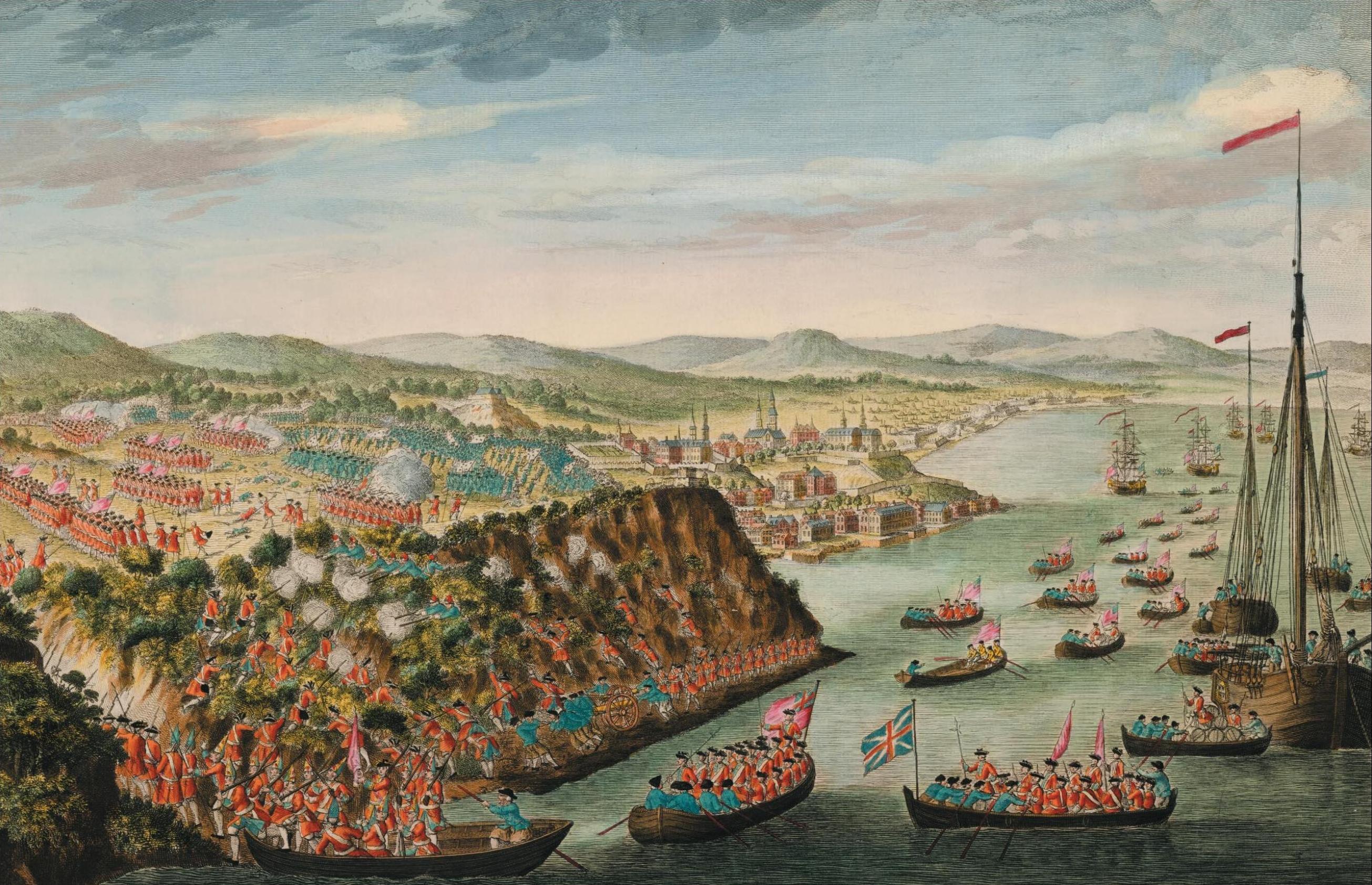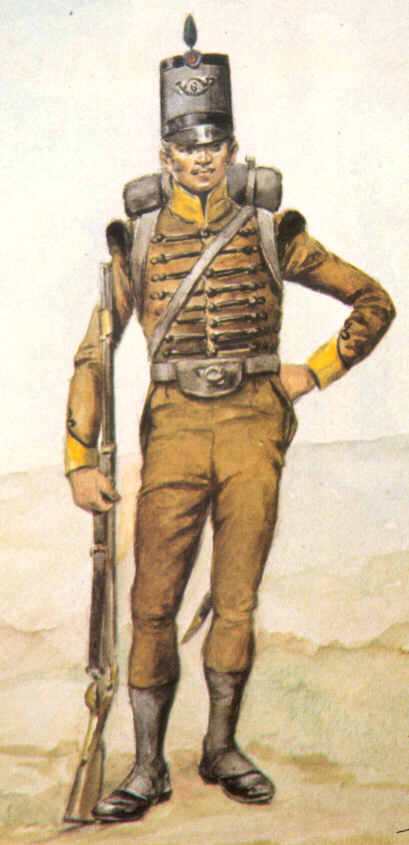|
Siege Of Quebec (1760)
The siege of Quebec, also known as the second siege of Quebec, was a 1760 French attempt to retake Quebec City, in New France, which had been captured by Britain the previous year. The siege lasted from 29 April to 15 May, when British ships arrived to relieve the city and compelled the French commander, François Gaston de Lévis, to break off the siege and to retreat. The British launched the Montreal campaign a few months later, which resulted in the city's capture. French resistance ceased, and the British conquest of New France was complete, as was confirmed in 1763 by the Treaty of Paris. Background In 1759, a British expedition, led by James Wolfe, had sailed up the St Lawrence River and laid siege to Quebec. After an initial failure at the Battle of Beauport, Wolfe managed to defeat the French field army under Louis-Joseph de Montcalm at the Battle of the Plains of Abraham on 13 September 1759. After Montcalm's death during the battle, the French armies outside Queb ... [...More Info...] [...Related Items...] OR: [Wikipedia] [Google] [Baidu] |
Seven Years' War
The Seven Years' War, 1756 to 1763, was a Great Power conflict fought primarily in Europe, with significant subsidiary campaigns in North America and South Asia. The protagonists were Kingdom of Great Britain, Great Britain and Kingdom of Prussia, Prussia versus Kingdom of France, France and Habsburg monarchy, Austria, the respective coalitions receiving by countries including Portuguese Empire, Portugal, Spanish Empire, Spain, Electorate of Saxony, Saxony, Age of Liberty, Sweden, and Russian Empire, Russia. Related conflicts include the Third Silesian War, French and Indian War, Carnatic wars, Third Carnatic War, Anglo-Spanish War (1762–1763), Anglo-Spanish War (1762–1763), and Spanish–Portuguese War (1762–1763), Spanish–Portuguese War. Although the War of the Austrian Succession ended with the Treaty of Aix-la-Chapelle (1748), none of the signatories were happy with the terms, and it was generally viewed as a temporary armistice. It led to a strategic realignment kn ... [...More Info...] [...Related Items...] OR: [Wikipedia] [Google] [Baidu] |
Cap Rouge
Cap-Rouge () is a former city in central Quebec, Canada, since 2002 within the borough Sainte-Foy–Sillery–Cap-Rouge in Quebec City. The site of the first attempted permanent French settlement in North America, Charlesbourg-Royal, is located at the confluence of the Rivière du Cap Rouge and the Saint Lawrence River. Its population was 13,153 as of the Canada 2011 Census. First permanent establishments In 1635, the first seigneurie was granted on the territory of Cape-Rouge, but revoked the following year by the Company of One Hundred Associates. However, by 1638 Paul Le Jeune, a missionary Jesuit, had noted in ''The Jesuit Relations'' the presence of some families in the valley. Between 1647 and 1652, the seigneuries of Maur, on the west, and Gaudarville, in the east, were established on the territory. From that moment, based on taxable citizens, the settlement on the lands of Cap-Rouge are established. The village formed is served by the parishes of Ancienne-Lorette in (1 ... [...More Info...] [...Related Items...] OR: [Wikipedia] [Google] [Baidu] |
Light Infantry
Light infantry refers to certain types of lightly equipped infantry throughout history. They have a more mobile or fluid function than other types of infantry, such as heavy infantry or line infantry. Historically, light infantry often fought as Reconnaissance, scouts, Raid (military), raiders, and skirmishers. These are loose formations that fight ahead of the main army to harass, delay, disrupt supply lines, engage the enemy's own skirmishing forces, and generally "soften up" an enemy before the main battle. Light infantrymen were also often responsible for Screening (tactical), screening the main body of a military formation. Following World War II, the term "light infantry" has evolved to include rapid-deployment units (including commando and Airborne forces, airborne units) that emphasize speed and mobility over armor and firepower. Some units or battalions that historically held a skirmishing role retain their designation "light infantry" for the sake of tradition. His ... [...More Info...] [...Related Items...] OR: [Wikipedia] [Google] [Baidu] |
Outpost (military)
In military terminology, an outpost is a location where detachments of military personnel are stationed at a distance from the main armed force or formation in a region. Outposts are usually located in remote or sparsely populated areas, positioned to observe and defend against unauthorized intrusions and surprise attacks, serving as the first line of defense. The station occupied by such troops, usually a small military base or settlement in an outlying frontier, limit, political boundary or in another country. Outposts can also be called miniature military bases based on size and number of troops it houses. Oldest known use is from the 16th century "station when on duty, a fixed position or place," 1590s, from French poste "place where one is stationed," Recent military use Military outposts, most recently referred to as combat outposts (COPs), served as a cornerstone of counterinsurgency doctrine in Iraq and Afghanistan. These permanent or semi-permanent structures, of ... [...More Info...] [...Related Items...] OR: [Wikipedia] [Google] [Baidu] |
Artillery Piece
Artillery consists of ranged weapons that launch munitions far beyond the range and power of infantry firearms. Early artillery development focused on the ability to breach defensive walls and fortifications during sieges, and led to heavy, fairly immobile siege engines. As technology improved, lighter, more mobile field artillery cannons were developed for battlefield use. This development continues today; modern self-propelled artillery vehicles are highly mobile weapons of great versatility generally providing the largest share of an army's total firepower. Originally, the word "artillery" referred to any group of soldiers primarily armed with some form of manufactured weapon or armour. Since the introduction of gunpowder and cannon, "artillery" has largely meant cannon, and in contemporary usage, usually refers to shell-firing guns, howitzers, and mortars (collectively called ''barrel artillery'', ''cannon artillery'' or ''gun artillery'') and rocket artillery. In com ... [...More Info...] [...Related Items...] OR: [Wikipedia] [Google] [Baidu] |
Franco-Indian Alliance
The Franco-Indigenous Alliance was an alliance between North American indigenous nations and the French, centered on the Great Lakes and the Illinois country during the French and Indian War (1754–1763). The alliance involved French settlers on the one side, and indigenous peoples such as the Abenaki, Odawa, Menominee, Winnebago, Mississauga, Illinois, Sioux, Huron, Petun, and Potawatomi on the other. It allowed the French and the natives to form a haven in the middle-Ohio valley before the open conflict between the European powers erupted. Background France had a long presence in Northern America, starting with the establishment of New France in 1534. Acculturation and conversion were promoted, especially through the activities of the Jesuit missions in North America. But unlike the other colonial powers, France, under the guidance of Louis XIII and Cardinal Richelieu, encouraged a peaceful coexistence in New France between Natives and Colonists. Indigenous persons, conv ... [...More Info...] [...Related Items...] OR: [Wikipedia] [Google] [Baidu] |
Sainte-Foy, Quebec City
Sainte-Foy (; ) is a former city in central Quebec, Canada alongside the Saint Lawrence River. It was amalgamated into Quebec City at the start of 2002. Most of the formerly independent municipality of Sainte-Foy is located in the borough () of Sainte-Foy–Sillery–Cap-Rouge — initially as one of the two constituent districts of the former borough of Sainte-Foy–Sillery. On 1 November 2009, Sainte-Foy was subdivided into four separate districts: Cité-Universitaire, Plateau, Saint-Louis, Pointe-de-Sainte-Foy, when the borough of Sainte-Foy– Sillery– Cap-Rouge was formed. Sainte-Foy is a major suburban neighbourhood west of downtown Quebec City. It plays a large part in Quebec City's economic life, with the Jean Lesage International Airport, Université Laval, multiple shopping malls, and both bridges to the south shore of the Saint Lawrence River. Demographics According to the 2006 Canadian Census: * Population: * % change (2001–2006): +5.1 * Dwellings: * Nu ... [...More Info...] [...Related Items...] OR: [Wikipedia] [Google] [Baidu] |
Montreal
Montreal is the List of towns in Quebec, largest city in the Provinces and territories of Canada, province of Quebec, the List of the largest municipalities in Canada by population, second-largest in Canada, and the List of North American cities by population, ninth-largest in North America. It was founded in 1642 as ''Fort Ville-Marie, Ville-Marie'', or "City of Mary", and is now named after Mount Royal, the triple-peaked mountain around which the early settlement was built. The city is centred on the Island of Montreal and a few, much smaller, peripheral islands, the largest of which is Île Bizard. The city is east of the national capital, Ottawa, and southwest of the provincial capital, Quebec City. the city had a population of 1,762,949, and a Census geographic units of Canada#Census metropolitan areas, metropolitan population of 4,291,732, making it the List of census metropolitan areas and agglomerations in Canada, second-largest metropolitan area in Canada. French l ... [...More Info...] [...Related Items...] OR: [Wikipedia] [Google] [Baidu] |
Paris
Paris () is the Capital city, capital and List of communes in France with over 20,000 inhabitants, largest city of France. With an estimated population of 2,048,472 residents in January 2025 in an area of more than , Paris is the List of cities in the European Union by population within city limits, fourth-most populous city in the European Union and the List of cities proper by population density, 30th most densely populated city in the world in 2022. Since the 17th century, Paris has been one of the world's major centres of finance, diplomacy, commerce, culture, Fashion capital, fashion, and gastronomy. Because of its leading role in the French art, arts and Science and technology in France, sciences and its early adoption of extensive street lighting, Paris became known as the City of Light in the 19th century. The City of Paris is the centre of the Île-de-France region, or Paris Region, with an official estimated population of 12,271,794 inhabitants in January 2023, or ... [...More Info...] [...Related Items...] OR: [Wikipedia] [Google] [Baidu] |
Snow Shoes
Snowshoes are specialized outdoor gear for walking over snow. Their large footprint spreads the user's weight out and allows them to travel largely on top of rather than through snow. Adjustable bindings attach them to appropriate winter footwear. Traditional snowshoes have a hardwood frame filled in with rawhide latticework. Modern snowshoes are made of lightweight metal, plastic, and other synthetic materials. In the past, snowshoes were essential equipment for anyone dependent on travel in deep and frequent snowfall, such as fur trappers. They retain that role in areas where motorized vehicles cannot reach or are inconvenient to use. However, their greatest contemporary use is for recreation. Snowshoeing is easy to learn and in appropriate conditions is a relatively safe and inexpensive recreational activity. However, doing so in icy, steep terrain requires both advanced skill and mountaineering-style pivoting-crampon snowshoes. Development Origins Before people built ... [...More Info...] [...Related Items...] OR: [Wikipedia] [Google] [Baidu] |
Quebec
Quebec is Canada's List of Canadian provinces and territories by area, largest province by area. Located in Central Canada, the province shares borders with the provinces of Ontario to the west, Newfoundland and Labrador to the northeast, New Brunswick to the southeast and a coastal border with the territory of Nunavut. In the south, it shares a border with the United States. Between 1534 and 1763, what is now Quebec was the List of French possessions and colonies, French colony of ''Canada (New France), Canada'' and was the most developed colony in New France. Following the Seven Years' War, ''Canada'' became a Territorial evolution of the British Empire#List of territories that were once a part of the British Empire, British colony, first as the Province of Quebec (1763–1791), Province of Quebec (1763–1791), then Lower Canada (1791–1841), and lastly part of the Province of Canada (1841–1867) as a result of the Lower Canada Rebellion. It was Canadian Confederation, ... [...More Info...] [...Related Items...] OR: [Wikipedia] [Google] [Baidu] |








